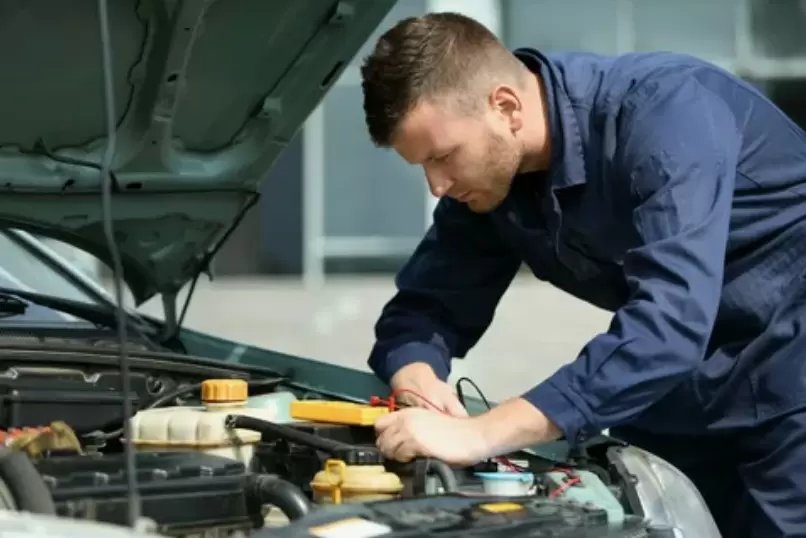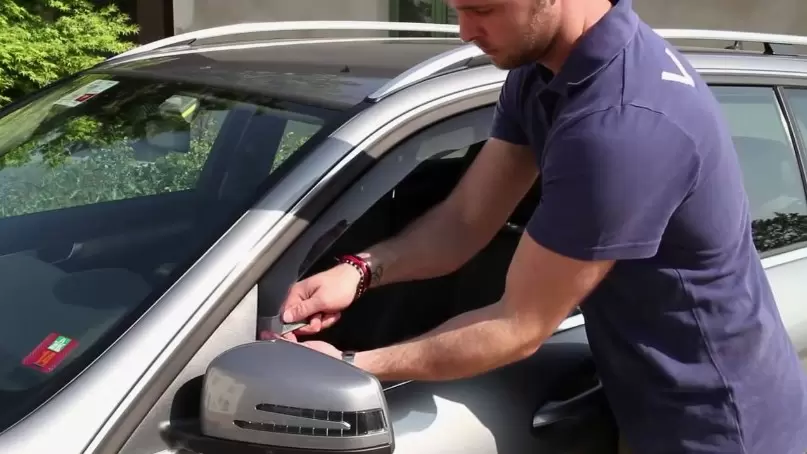Have you noticed odd damp spots appearing under your car or coolant levels decreasing more quickly than normal?
You’re likely wondering, “why is my car leaking water?” While water leakage issues can feel intimidating to diagnose, remaining calm and methodical is key to identifying the source and resolving the problem.
This comprehensive guide will walk you through common signs that indicate a leak, investigate probable causes based on vehicle age and conditions and provide a step by step process to pinpoint the precise area of water loss.
We’ll also explore repair options ranging from basic do it yourself jobs to mechanic workshop needs depending on the root cause uncovered. With diligence, virtually any water leakage mystery plaguing your ride can be solved, avoiding larger repair costs down the road. Let’s get started!
Recognizing the Telltale Signs:
Before beginning your diagnosis, familiarize yourself with typical indicators a water leak may exist. Regularly monitoring for these subtle signs increases your ability to catch minor issues before they escalate:
- Fresh Water Puddles: New standing water or damp spots appearing underneath after parking where no rain has fallen suggests an active weep somewhere.
- Coolant Loss: Check coolant levels in your reservoir weekly. Repeated manual top ups signal coolant escaping the closed system that requires investigation.
- Steam on Cold Mornings: Vapor wafting from under the hood during engine warmup often signals a hose or radiator crack allowing moisture to atomize before heat seals it.
- Oily Milky Fluids: A telltale mixing of coolant into engine oil points to a compromised area where these separate circuits meet, like a cracked cylinder head or water pump seal failure.
- Overheating Woes: If your temperature gauge rises over extended high-load driving, obstructed coolant flow from an emerging leak could be culpable and requires addressing.
- Rust Trails Underneath: Over time, slow seeps may leave oxidation residue along the undercarriage indicating a leak’s historic path for clues.
- Musty Cabinet Scents: Significant heater core cracks introduce antifreeze vapors into the interior airflow, especially prevalent during defrost cycles.
By familiarizing yourself with these common flags, you gain an advantage in catching minor issues before they compound into significant damage or major component replacement costs down the road. Early detection is key to effective diagnosis and repair.
Assessing Probable Causes:

With confirmation that a leak exists based on telltale signs, your next step involves assessing probable root causes.
Evaluate each system component’s typical lifespan and known failure modes based on your vehicle’s age, usage conditions and maintenance history. Here are some of the most prevalent underlying issues discovered:
Aged Rubber Coolant Hoses:
Over time, rubber coolant hoses become increasingly brittle due to constant heat cycles and component vibration. Cracking forms as hoses exceeding 10-15 years in service see their flexibility deteriorate.
Hoses closest to hot engine areas like the water neck or heater core connections tend to fail first due to elevated temperature exposure.
Replace all hoses upon any indication of stiffness, bulging or seeping for preventative maintenance.
Worn Water Pumps and Gaskets:
Replacing coolant through the block, water pumps continue operating under pressure for 100,000 miles on average. Over time, seals dry out or small external weep holes allow seepage to develop.
While usually minor, ignoring issues prevents larger failures down the road. Have pumps professionally serviced at the 5-7 year mark or first signs of weeping to avoid overheating risks.
Cracked Radiators and Cooling Fans:

Subjected to constant expansion contraction during heating and cooling of the coolant, pressed metal radiators sometimes develop small fractures or seams come loose over 8-10 years of duty.
Low impact cracks may be repairable, but severe multiple fractures warrant component replacement. In similar fashion, cooling fans crack along motor mounts given ongoing vibration.
Aged Heater Cores:
Inside climate control units, copper tubing endures rust accumulation and thermal stresses. While not as common as other cooling system parts, small internal cracks do form requiring heater core extraction and replacement by seasoned mechanics due to complex disassembly reassembly needs. Catching heating or misting issues promptly helps justify substantial repair costs.
Thermostat and Housing Wear:
Another wear item, thermostats regulating coolant flow last 5-7 years on average before seals wear. Avoid overheating by proactively replacing this $30 component at the first sign of malfunction to prevent housing cracks from developing.
Their housings can also crack over long periods if coolant leakage remains unaddressed, allowing seepage into the engine.
I’ve highlighted just a sampling of the most prevalent water loss causes automotive technicians typically encounter.
Overall system functionality and lifespan depends greatly on preventative coolant flushes every 2-3 years along with prompt repairs the moment minor seepage appears. Catching small issues early prevents avoidable repairs down the line.
Systematically Diagnosing the Culprit:
To methodically pin down the root water leak, a careful process increases the likelihood of a first-time repair:

Visual Inspections:
Start by inspecting all externally visible engine components for cracks, bulges or moist residue trails while warm using a bright flashlight. Pay close attention to sealing surfaces, hoses, pipes and visible areas along the underside chassis where fluid typically runs.
Hands-On Testing:
Gently squeeze suspected hoses, radiators and heater cores checking for minute seepage indications while an assistant observes areas you cannot see alone like the oil pan or transmission case.
Dye Penetrant Testing:
If initial visuals prove inconclusive, add a UV-traceable coolant additive following package instructions. Safely circulate for a full day before inspecting under black light at intervals, revealing moisture migration paths.
Pressure/Vacuum Testing:
For tough nuts to crack, mechanics can pressurize the closed system watching gauges for pressure drops pinpointing even minute seepage points traditional dye may miss. Computer assisted monitoring yields highly accurate results.
Forum Research Assistance:
Consulting online communities describing issues common to your vehicle year make model may provide case study clues to overlooked leakage areas if all else fails. Others’ experiences prove valuable second opinions.
With diligence across thorough visual inspections, simple hands on evaluations and advanced diagnostic techniques, the true water leakage root cause surfaces in virtually every case. Correct identification ensures a comprehensive fix versus recurring symptoms down the road.
Executing Repairs:
Once found, repairs span a spectrum from basic do it yourself tasks to shop work depending on the underlying cause:

Loose Drain Plugs and Gaskets:
Slipping external gaskets or loose drain plug threads allowing microscopic weeping often seal completely with tightening hand tools alone.
Minor Hose or Radiator Seepage:
Very small external cracks may seal from inside radiators using repair kits. Hoses and belts are low-cost preventative maintenance replacements for any signs of hardening, bulging or moisture indications.
Common Wear Components
Water pumps, coolant reservoirs, thermostats and temperature sensors needing renewal fall within DIYer capabilities with online guides. Invest in OEM parts for full-system compatibility.
Complex Internal Issues:
Heater core cracks require draining the coolant and disassembly complexity best tackled by certified professional technicians. Trust their diagnosis and repair experience.
Regardless of the repair scope, flushing any replaced coolant followed by refilling with new premixed antifreeze helps remove debris and provides optimal corrosion protection.
Monitor coolant levels and heater function routinely thereafter to certify a thorough repair. Taking a vigilant, step-by-step diagnostic approach ensures water leak nightmares stay solved for the long haul.
With patience and know-how, the mystery behind that troubling automotive water seepage issue plaguing you “why is my vehicle leaking water” need not remain mysterious.
Proper sealing extends your pride and joy’s operating life while sparing unnecessary repair bills down the road. I hope this guide proved useful please let me know if any other questions arise!

FAQ:
Q:Should I be worried if my car is leaking water?
A:Your biggest concern should be if the liquid isn’t water.
Q:Why is my car leaking water from underneath?
A: air conditioning, exhaust, and the windshield washer fluid reservoir.
Q:Why is water dripping from my car’s front?
A:condensation from the aircon unit.
Q:How to fix a water leak in a car?
A: replacing a broken seal or rubber.
Q:Is it normal for car AC to leak water?
A:This is normal use.
Conclusion:
- In closing, properly diagnosing and repairing car leaking water in your vehicle takes diligence but brings lasting peace of mind. By familiarizing yourself with common signs, thoroughly inspecting all components and methodically testing suspected areas, the root cause nearly always comes to light.
Whether remedied through simple do-it-yourself fixes or professional help, correcting the issue prevents costly breakdowns. Taking a proactive, step wise approach keeps you cruising confidently down the road without leakage worries hampering your travels or damaging your ride over time. Please feel free to reach back out if ever need advice resolving that mystery puddle lurking below!

With over 5 years of dedicated experience in the automotive industry, I am passionate about all things automotive. My journey began with a deep curiosity for automobiles, which led me to delve deeper into their mechanics, technology and trends. My expertise spans various aspects of the automotive world, from the latest electric vehicles to classic car restoration techniques. Through my articles, I aim to share my knowledge and insights, helping readers stay informed and inspired in the fast-paced world of the automobile.











